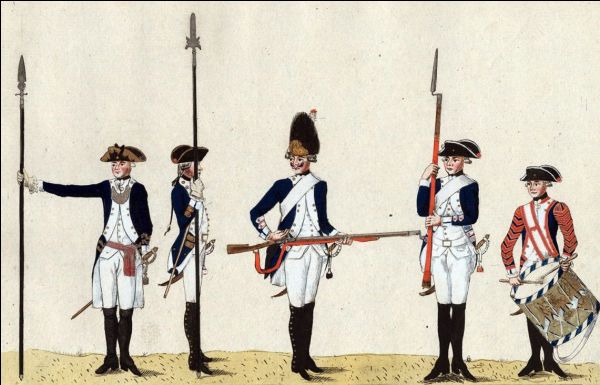
About 900 Hessian soldiers and officers were taken prisoner by General Washington and the Continental Army following the Battle of Trenton on December 26, 1776. Have you ever wondered what happened to them?
Washington and his troops wasted little time moving their new prisoners away from the scene of the battle, says Pat Seabright, a historical interpreter at Washington Crossing Historic Park. That afternoon and into the night, they were marched north and crossed the river to McConkey’s Ferry Inn—the place where the crossing began on Christmas Day.
“It was quite the ordeal,” Seabright says. “For one, the snow from the winter storm that began overnight had turned to rain. The river remained ice-choked. And the Americans were also moving the captured Hessian armaments, including six cannons.”
Once they arrived in Pennsylvania, the Hessian officers were separated from the enlisted soldiers, who were immediately marched to Newtown and divided between a prison and Newtown Presbyterian Church. The officers—about 26 of them in all—were held overnight in a single room of the McConkey’s Ferry Inn.
The next day, they were marched to Newtown, too, but they were housed quite comfortably in private homes. The special treatment, Seabright explains, was because of their status.
Later that day, four of the officers were taken to meet Washington. One of them, Lieutenant Andreas Wiederholdt, willingly told Washington all the mistakes the Hessians had made fighting the Battle of Trenton. “Which, of course, was information that would prove to be useful in defending Trenton in the coming days, during the Battle of Assunpink Creek,” Seabright says.
From Newtown, the Hessian officers and soldiers were marched to Philadelphia and paraded through the streets before they were ultimately settled in a barracks. Washington promptly published a proclamation stating that the Hessians were not the enemy. They were forced into the war and should be treated humanely, it said.
From that point, people started to bring food to the barracks, and they treated the Hessians with great kindness—much to their surprise. Quite notoriously, the British and Hessians treated their American prisoners brutally, especially on the prison ships anchored in the Hudson River.
“The Hessian officers eventually signed something called a ‘parole,’ saying they wouldn’t do anything to get in Washington’s way,” Seabright says. “As a result, they were pretty much given free rein.”
From the barracks in Philadelphia, the Hessian soldiers were marched to Lancaster County, where they were put to work on farms. The officers were sent to Virginia. “When they reached the Virginia border,” Seabright says, “the American guards basically released them on their own recognizance.”
According to historian David Hackett Fischer, about 23 percent of the Hessians who survived the war remained in America. Other estimates go as high as 40 percent.
A significant portion returned to America after the war with their families. “So it was not a bad ending for the Hessian prisoners,” Seabright says.
Want to learn more? A Generous and Merciful Enemy: Life for German Prisoners of War During the American Revolution (University of Oklahoma Press, 2015) is available in the park gift shop.

